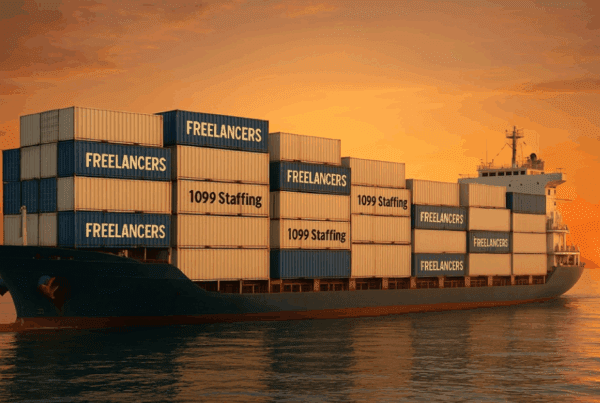
The year is 2021.
Your lease is ending at your current apartment, and with your roommate moving into her boyfriend’s new house, you’re forced to find habitation elsewhere. And with your new remote policy at work, the world is your oyster: so, where do you go?
While you may typically expect people’s answers (and fantasies) to vary from sparkling beaches in Fiji to enchanting towns in Germany, as professionals are realizing the world is their oyster, they’re also beginning to realize that home isn’t just where you lay your head; it’s also where their coworkers are. But what if there was a way to continue to work with your coworkers and have in-person connections while also living in a dream location? For employees at larger companies, this is quickly becoming a viable option.
Introducing: Clustering.
With remote work quickly becoming the norm, large enterprises with hundreds of employees are faced with a new issue: fostering connections between team members in different locations. Clustering, which brings remote teams together in remote locations, can be the answer to this conundrum.
It’s obvious with remote work, employees have the opportunity to live anywhere they’d like. With clustering, employees have the ability to choose their location as they wish but are encouraged to co-work with other employees within their area and be a team outside of the office.
Here’s how the future of clustering will play out in our modern workforce.
The freedom to live anywhere
In 2020, nearly one out of every four job applications submitted were from out-of-state applicants, an increase of 34 percent from 2019.
That’s a huge jump, especially when considering that for decades before, it was standard practice to only search and apply for jobs within your local region.
Now, in most cases, workers have no limits in terms of location and enjoy the freedom to live from anywhere in the world without worrying whether their location will harm the chances of finding a well-paid, desirable job. And for employers, offering remote options greatly widens their talent pool and allows for top talent from anywhere in the world to apply in a landscape where the talent themselves are becoming more selective about jobs based on the ability to work remotely. Smaller cities that professionals previously rarely considered, such as Fort Collins, Colorado, are making a comeback and are anticipated to have their population greatly increase as workers leave bustling cities now that jobs are globalized.
The idea of living and working locally is an American ideal that is slowly fading out, and with 56 percent of Americans planning to move in 2021, location will clearly play a much smaller factor in job hunting than in previous years.
Cost savings are incredibly valuable
Offices are not cheap to rent or maintain: this much we know. With the era of remote work beginning, they’re useless for employers looking to hire new talent who refuse to spend most of their day in a cubicle- no matter how many free snacks are offered in the break room. Nowadays, flexibility and autonomy are valued much higher than old office perks could ever live up to. Plus, with the average yearly cost to rent an office, per employee, in New York being $14,800, downsizing is in everyone’s best interest.
For companies that have larger staffs, these enormous costs are pointless to pay in the era of remote work and could be harming other areas of your business that matter more to the success of your team. Instead, remote, clustered teams still give workers the feeling of community with other team members and remove thousands, or potentially even millions of dollars in costs simply by utilizing common spaces in their local region to work.
Not only do offices tend to cost enormous amounts of money, they can also take a toll on culture. Not all offices are toxic to company cultures, but in today’s world, autonomy and independence are valued high above any corner office- and in-person work often limits these factors, enabling micro-management and making employees feel as if they are being watched. Clustered teams allow workers to have autonomy while still interacting with team members and receiving elements of collaboration and community that they would normally get in the office, and added flexibility, to boot.
Helps contract workers feel more a part of the team
In the traditional workplace model, it’s often very difficult for full-time staff and contractors to mingle or build connections of any sort; they either worked different hours or faced a divide as contractors worked far off-site, whereas employees worked in the office. There’s often even the potential for tension- some full-time workers may see contractors as a threat to their job, or a management responsibility, rather than a partnership.
Clustering can help to not only diffuse some of this tension but also build stronger relationships by enabling better access to in-person collaboration. When employers shift all staff to remote, there is a greater ability for both types of staff to find mutual locations where they can connect and collaborate on work, in person. By working together in person, full-time staff and freelancers can reach outcomes quicker, and, most importantly, build strong working relationships while doing so.
The working world is rapidly moving toward a globalized model where location is no longer a deciding factor in job searching, yet in-person connections are valued more than ever after a year of isolation. For employers looking to continue to recruit top talent while still building a strong culture- and bring their teams closer together than ever before- clustering is the way to go.
FlexTal is the #1 flexible talent matching platform. Every day, we match organizations with pro-level independent contractors for flexible hourly and project-based engagements. Match with the Right Pro, Right Now.



